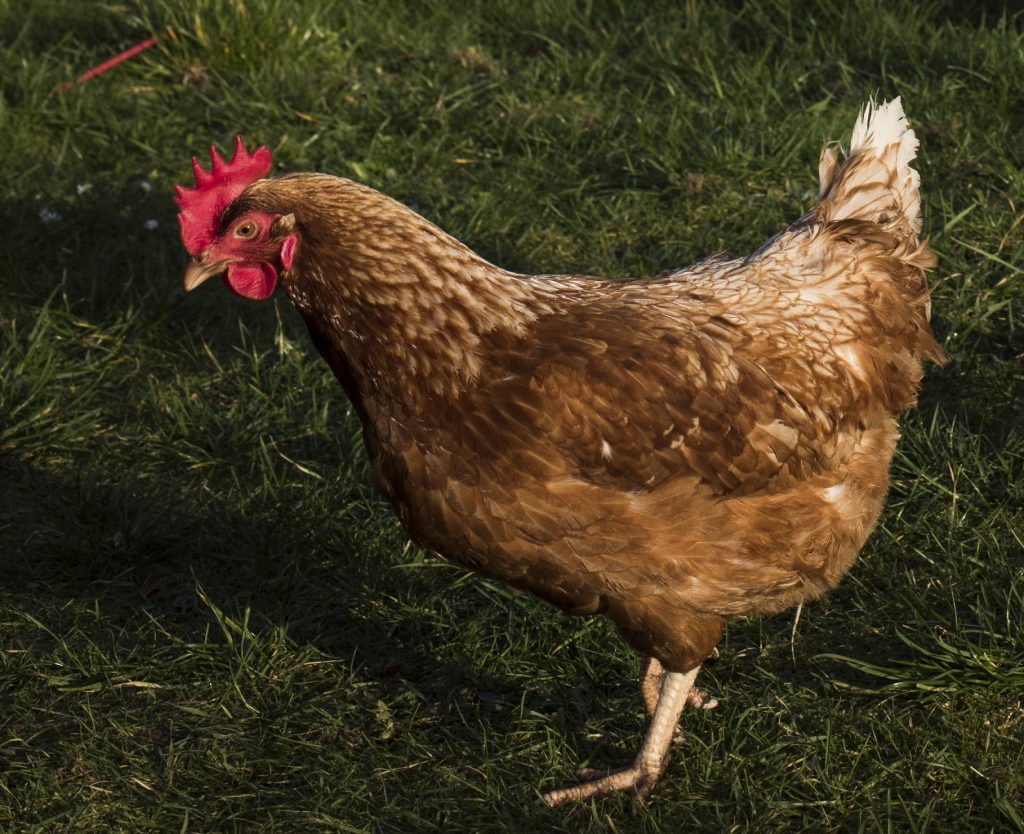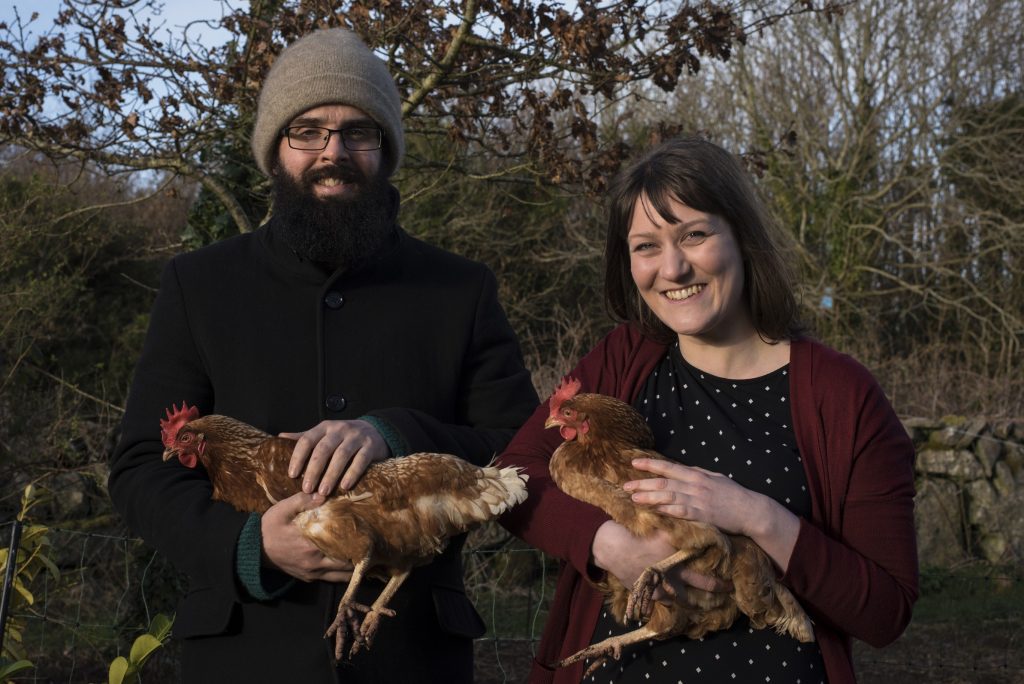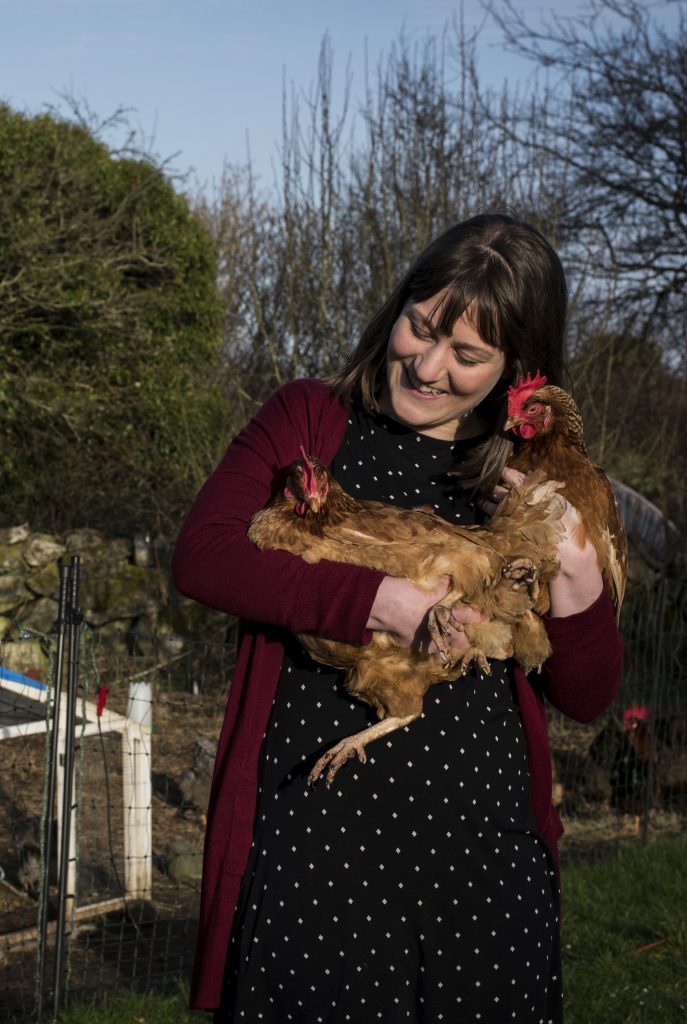Shopping and storage
Keeping hens at home
Sourcing
Laying hens can be purchased from breeders across Ireland. The cost varies depending on the breed of hen. A low-cost and rewarding alternative is to adopt hens rescued from industry. LittleHill Animal Rescue and Sanctuary finds happy homes for commercial hens that are destined to be sent to slaughter, for an adoption fee of €6 per hen to cover the charity’s expenses. Seasoned hen adopter Nelly states: “Although they were considered ‘spent’ by the industry, my rescue hens each lay about 5 or 6 eggs per week, even through the winter. They often take a week or two to settle in to their new, happy homes, but after this most of them will make great little layers.”
In the egg industry, once laying hens are one and a half years old, they are considered unprofitable and are sent to slaughter. However, at this age hens still have a potential life span of a few more years and often, they can continue to lay about 5 eggs per week.
Based in Kildare, LittleHill is an animal rescue and sanctuary which carries out several hen rescues each year, rescuing about one thousand hens from slaughter at a time and finding homes for the adoptees. LittleHill regularly announces hen rescue events on their Facebook page, along with a list of towns throughout the country where they plan to bring hens for rehoming. People can book hens for collection at a nearby town by sending a message to the charity’s Facebook page. Any remaining hens that don’t get adopted stay at LittleHill’s sanctuary in Kildare. Volunteers like Nelly are integral to the process of rescuing and rehoming these animals. She says:
“I help find homes between Kildare and Galway for the hens who are left at the sanctuary. As soon as I’ve received home offers for about 35 hens, I’ll do a ‘chicken run’ in my little car. This involves preparing cardboard boxes, which the staff at my local supermarket save for me, lining them with wood shavings and cutting air-holes. On the day, I arrive at the sanctuary at about 11am, where myself and the sanctuary’s volunteers carefully place the ladies into designated boxes. I then drive home, stopping in various towns along the way to meet adopters… Because hens can be a great source of joy, I’m delighted for the opportunity to help people adopt… It makes more sense to save the lives of ex-commercial hens than buying them from the market.”
Food and Feed
Fresh eggs from your own household often have a much lower carbon footprint than shop-bought eggs. On the topic of food waste, it is possible to supplement hen feed with kitchen food waste. Nelly says: “Mine absolutely love left-over cooked spuds, rice and pasta, as well as brown bananas and salad leaves.”
However, hens will not be sustained by kitchen scraps alone: Omnivorous hens like a varied diet. Avoid feeding hens anything that has gone off as they could become sick from it. Meat, citrus fruits, onions and potato peelings are best avoided. Scratching around the garden should provide hens with some slugs, snails, weeds and grass which will add further variety to their diet. Layers pellets can be bought from agricultural supply shops and some pet shops, hardware stores and veterinary clinics. Depending on factors such as the type of feed, the weight of the bird, the time of the year and level of outdoor access, hens will eat approximately 125g – 180g of feed per day.
Legislation
All poultry premises, regardless of size or whether or not they are kept on a commercial basis, must be registered with the Department of Agriculture, Food and the Marine. All persons involved in owning, keeping, dealing or trading in poultry must be registered under the Diseases of Animals Act 1966 (Registration of Poultry Premises) Order 2008 (S.I. No. 42 of 2008 as amended by S.I. No. 57 of 2011) and adhere to the disease prevention and control requirement set out by this legislation. See DAFM for more.

Photograph by Louise Wallace
Keeping hens doesn’t require a huge amount of time or money but it does involve commitment. With most hen houses, the hens need to be let out each morning and closed in at night. Predators can exist in both urban and rural settings, the fox being perhaps the biggest threat. It is recommended that the top of your chicken enclosure is covered and that the wire goes 15cms (6 inches) underground. Additionally, the hen house will need to be cleaned out on a regular basis.
For Nelly, the pros heavily outweigh the cons: “There’s nothing like your own chickens’ eggs – that you know came from the happiest of hens. Also, their food is cheap, so the cost of keeping hens is often cancelled out by the eggs they lay. As well as enjoying them ourselves, I also love giving eggs to friends and neighbours, most of whom are delighted to receive eggs from happy hens. I also swap eggs for homegrown veggies, and my yoga teacher gives me a large discount in exchange for 6 eggs a week.” Further gains include the opportunity to improve soil fertility in the garden. Hen bedding can be used to produce rich compost. While hens can be incredibly useful to clear a patch of land through eating weeds and loosening the soil, be careful that they don’t get near your veggies!
Spring makes for a good time to start keeping hens. Before embarking on obtaining the birds themselves, it’s important to be ready for the new arrivals. A hen house, enclosure and food and water containers are all necessary to housing hens. All these items come at a cost but it is possible to reduce the cost of keeping hens by upcycling and supplementing their food with scraps. During winter months, hens require more food to maintain body temperature. In summer, you can expect an egg each day from each hen while during wintertime, the supply of eggs dwindles comparatively.
Therapeutic benefits
Chickens offer a unique learning experience for children and adults alike. Even young children can get involved in collecting the eggs. According to Nelly: “They’re very entertaining, funny creatures. Myself and my partner just love to gaze out the window at them while they chase each other, sunbathe, dustbathe and preen themselves. Dustbathing is my favourite thing to watch – this involves several hens lying down together on a patch of dry loose soil and squashing into each other, while scratching dirt up in between their feathers. Hens use this method to prevent mites, but it’s extremely funny to watch.”

Photograph by Louise Wallace
We’re often told that dogs are man’s best friend but it sounds like the hens will give them a run for their money. Nelly speaks affectionately about her hens: “After spending the first few hours with your new arrivals, you’ll start getting to know their funny and distinct personalities. In spite of their unfair reputation, chickens are highly intelligent and emotional creatures… It’s so fulfilling to able to watch rescue hens flourish as they settle into their new stress-free lives, which they would never have experienced if they hadn’t been rescued.”

Photograph by Louise Wallace

